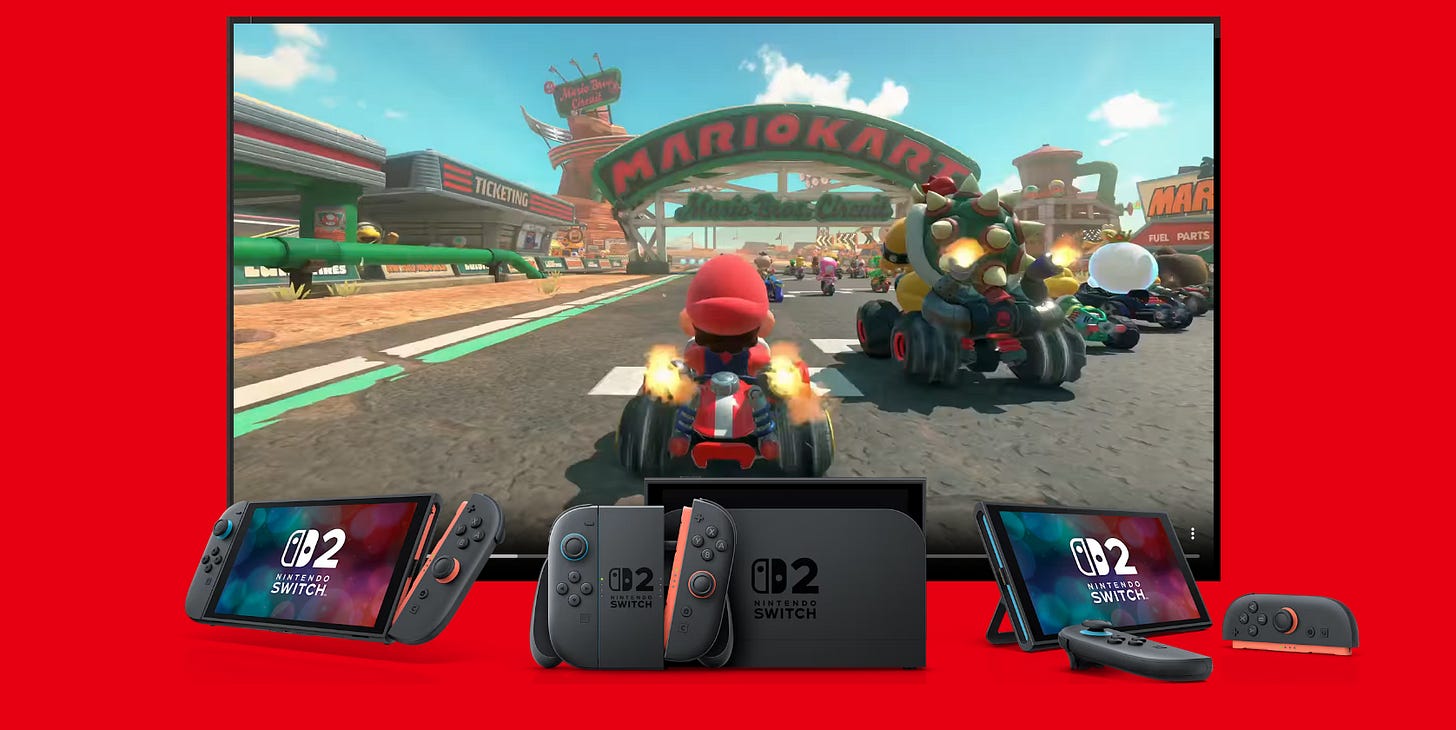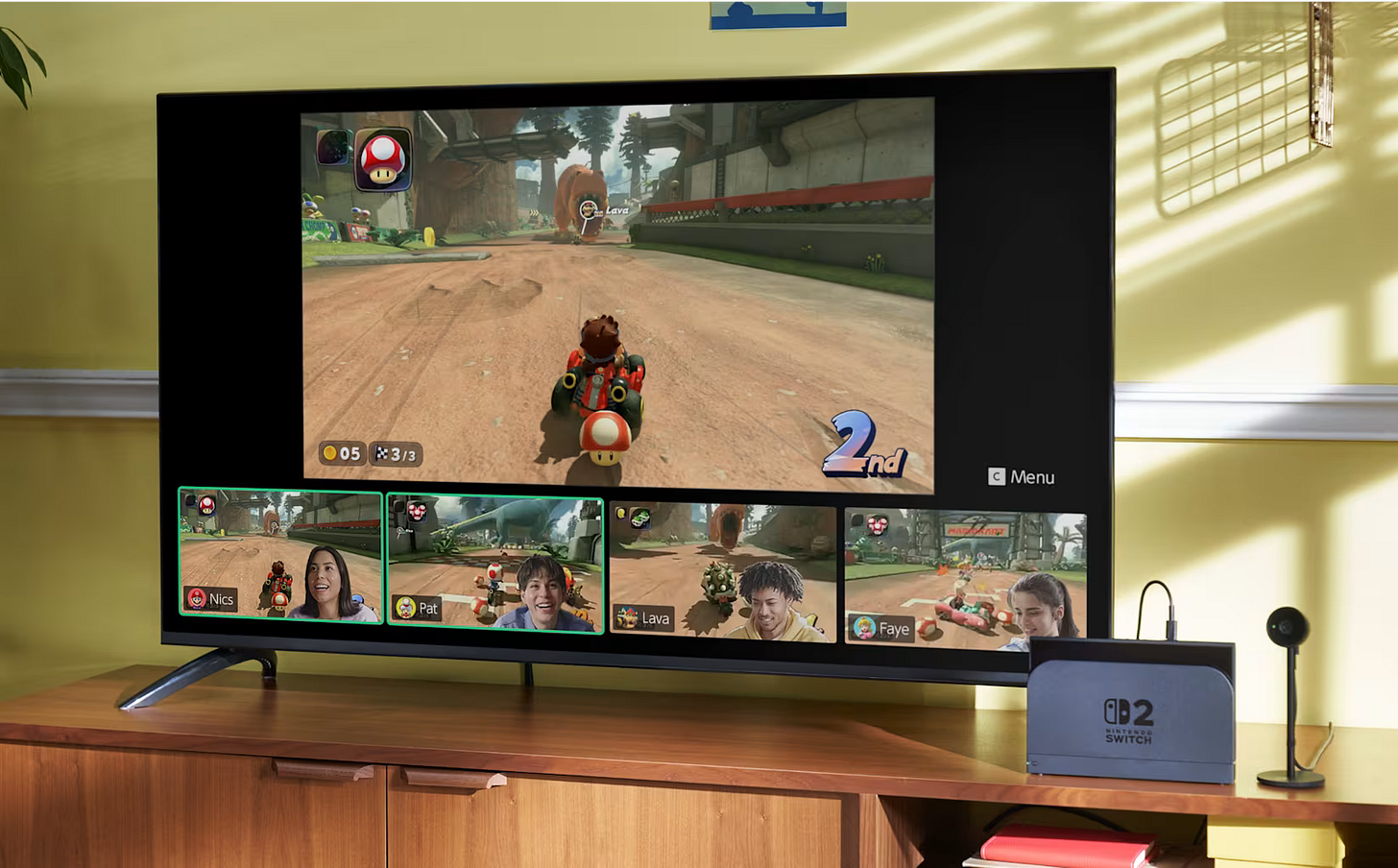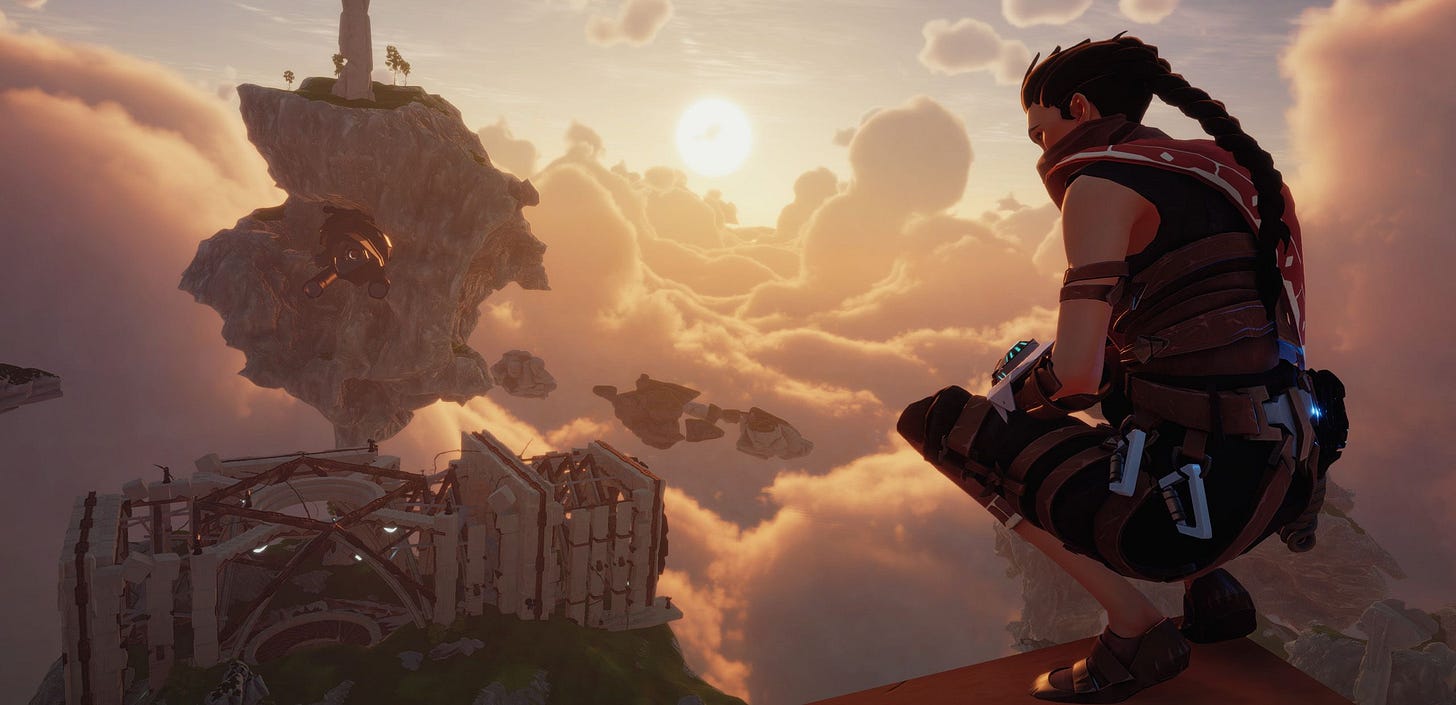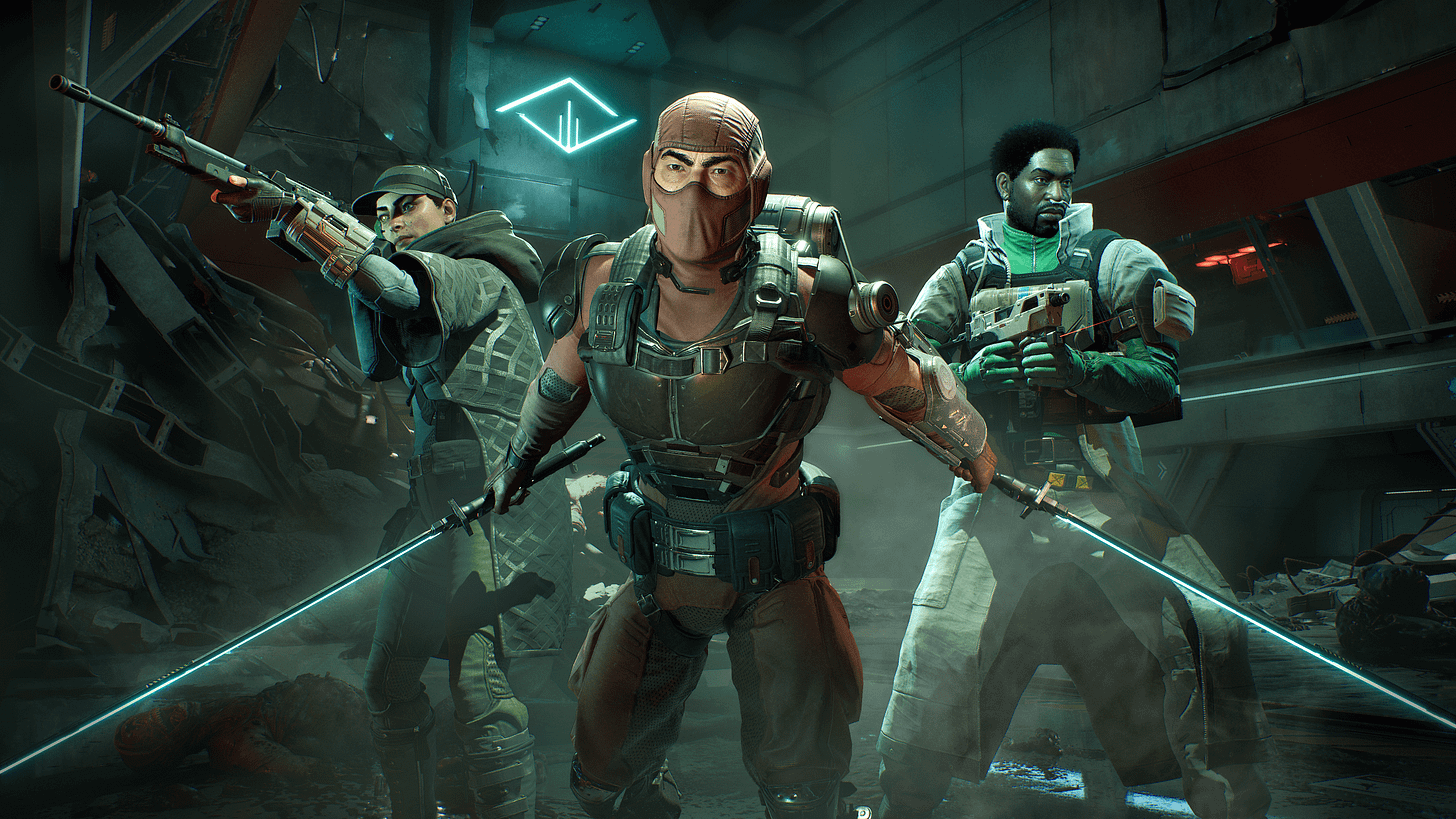Where famous blockbuster Nintendo creations like the Game Boy, DS, and Wii took the path less traveled to tremendous success, the Switch 2 is going a more familiar, less risky route.
The Switch 2 was designed around the core principle of making a more powerful Switch rather than focusing on unconventional play ideas.
The strategy behind the new console, which hits on June 5 for a penny shy of $450, was outlined in a dense Nintendo-led Q&A published on the company’s website the day Nintendo announced the Switch 2’s release date, price, and many features.
Three people from Nintendo’s Entertainment Planning & Development Department handled the answers to the surprisingly detailed, sometimes even pointed questions. Kouichi Kawamoto is the producer of the new console. Takuhiro Dohta is the console’s director. And Tetsuya Sasaki helped to develop the Switch 2’s system and development software.
Development on the Switch 2 officially started in 2019, though reading through the four pages of interviews, it’s clear that some of the features that made their way onto the system were concepts being worked on since before the release of the original Switch in 2017.
But when the company started really thinking about what the next system should be, it went through a seed-sowing stage, which ended with the decision to prioritize processing speed for the Switch 2 over everything else.
It raised the question (which, to its credit, Nintendo asked) why it wasn’t doing what it’s done so often in the past: focusing on a more unconventional system, like what was seen in the Wii and Ds.
“From Nintendo DS to Wii U, we offered new ways to play by implementing hardware features that weren't typical for game consoles at the time and asked software developers to take advantage of them,” Kawamoto said. “However, with Switch, we made that less of a priority.”
Instead, he added, the Switch prioritized the ability to play games both on a TV and in handheld mode, something any game could take advantage of. So ,with the Switch 2, the company again decided to make having unique hardware features less of a priority.
“We decided it would be best to keep the Switch system’s design and not make any ‘changes for change's sake,’” he said.
Interestingly, the trio all noted that unique experiences can still be created by adding accessories to work with the console. You can see this being played out with the original Switch in games like LABO and Ring Fit Adventure.
Even the Switch 2 is getting such an accessory at launch. The Nintendo Switch 2 camera will be sold separately and, when plugged into the back of the system, will seemingly support everything from live streaming to motion games.
While the Switch 2 appears very much to be a stronger processor-powered version of the original Switch, the trio did detail all of the significant changes that come with the system.
First, is the fact that the Switch 2’s hardware is so different that it can’t natively run Switch games.
“Switch 2 doesn't contain any Switch hardware,” Kawamoto said.
Instead, to achieve backward compatibility, the game data is being converted in real-time as it is read in, Sasaki said. He added that the company is still in the process of checking the more than 10,000 games available on the Switch to ensure compatibility.
The system also has a larger, 7.9-inch screen, more internal memory and storage space, and a sized-up battery to help reduce any loss of playtime thanks to the new specs. It also has USB-C ports on the top and bottom of the system, thank god!
The Joy-Con 2s seem to have been completely rebuilt; they’re larger, have a more robust rumble, are attached to the console with magnets (something Nintendo wanted to do with the original system but couldn’t figure out at the time), and now features a mouse mode.
The mouse idea came about after Kawamoto was playing a PC game using a mouse.
“The idea struck me that maybe the Joy-Con controllers could also be used as mice,” he said. “Switch 2 was originally designed to support a wider range of games by improving the system's processing speed, so with that in mind, I thought it'd be better to be able to play interesting games that require a mouse.”
It was also an idea that goes back to the formative philosophy of legendary GM of Nintendo R&D Gunpai Yokoi, who led the development of Game & Watch and the Game Boy: Lateral thinking of withered technology.
In other words, Nintendo could create new hit products by taking widely used technology that isn’t cutting edge anymore and using it for new and different purposes.
That’s one way to look at Nintendo’s decision to add a C button to the system tied to the ability to chat with fellow gamers. While in-game chat is by no means new, the Switch required players to use a mobile app to chat while playing, thanks to hardware limitations.
The Switch 2’s GameChat, though, is built into the system and supports not just voice by video, allowing players to share their screens or video of themselves (with the camera add-on) while they play.
The idea to include video chat as a pop-up in the game came from the use of video conferencing at Nintendo during COVID-19, Kawamoto said.
“Back then, we were using a video conferencing system to check the software we were developing with our team, but the screen-sharing function built into the video conferencing system only allowed us to share one gameplay screen at a time,” he said. “So, we had each person place their game screen in front of their camera instead of their faces. When we did that, it felt like we were all in the same place, each bringing our own console to play the game together, which was a lot of fun.”
Another neat feature is GameShare, which allows Switch 2 players to share their game on their own Switch or Switch 2 via local play. GameShre also works with GameChat for online play.
Initially, the team looked at a similar feature, Download Play, used by the Game Boy Advance and Nintendo 3DS. But they decided that downloading such large games would take too long.
“So, we thought that by taking advantage of the Switch 2 system's processing power and using the same streaming technology that Wii U uses to send images from the console to the handheld Wii U GamePad, we could share the gameplay instantly without having to take time to transfer the software,” Kawamoto said. “I thought it’d be nice if players could share games instantly and play together competitively or cooperatively.”
The team also pointed out that this will be the first time players can do a system transfer without having to create a new account. Previous hardware generations didn’t support account transfers.
“Since we established Nintendo Accounts and supported them on Switch, we've made various efforts to expand their use beyond our dedicated gaming systems,” Dohta said. “I think it’s natural for our customers to assume that those accounts, which they’ve used for various purposes other than gaming, can be used as-is on the new system.”
Finally, and probably not most importantly, the three discussed the naming of the Nintendo Switch 2.
Of course, the name is the least impactful thing about this latest console, but I was not alone in my angst over the decision to simply tack on a number to a successor console. It is, after all, a first for Nintendo.
It turns out that Nintendo really struggled with what to call this system.
“There were a lot of ideas for the name,” Kawamoto said. “We even considered ideas like ‘Super Nintendo Switch.’ However, Super NES, which came out after the NES, couldn’t play NES games. Since Switch 2 can play Switch games, it didn't feel right to use the same naming convention as Super NES. Switch 2 is a new system with improved performance, but we'd like players who get their hands on it not to focus on the specs but rather to think of it as the latest system developed by Nintendo.
“So, in the hope that it becomes the new standard for Nintendo Switch, we named it Nintendo Switch 2.”
I still think there’s an argument to be made that this is more akin to a new DS or Game Boy, which had all sorts of things other than a number slapped onto the end of their names.
I’ll leave the continued arguments over this to you and the comments section.
Elsewhere
Bossa takes on AAA level online multiplayer with coherence!
How The Thing, Aliens, and Predator helped shape Killing Floor 3











An amazing write up! I’m not interested in the S2 at all but this was an a really informative read for someone who is interested in the tech!
Loved the article! I’m a big believer in the philosophy of using existing technology in new, creative ways, so I really appreciated the Gunpei Yokoi mention in this piece.
What stood out most to me, though, is how Nintendo seems to be avoiding unnecessary disruption with the Switch 2. They’re not reinventing the wheel just for the sake of it — and honestly, that might be the smartest move.
Focusing on meaningful improvements like modern account systems, share play across multiple devices, and smoother user experience feels like a natural (and overdue) evolution. I hope these features become the new standards for Nintendo from now on.